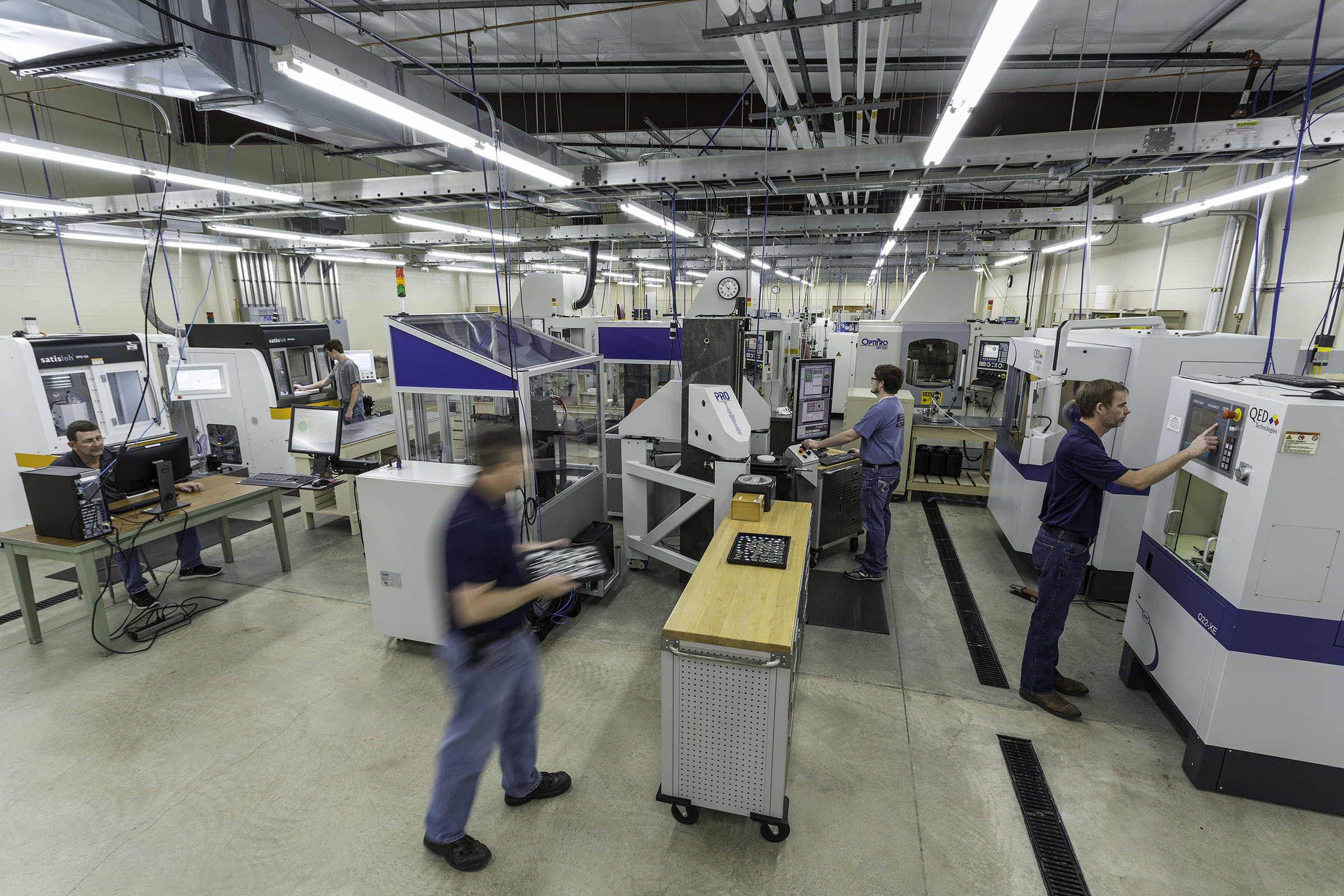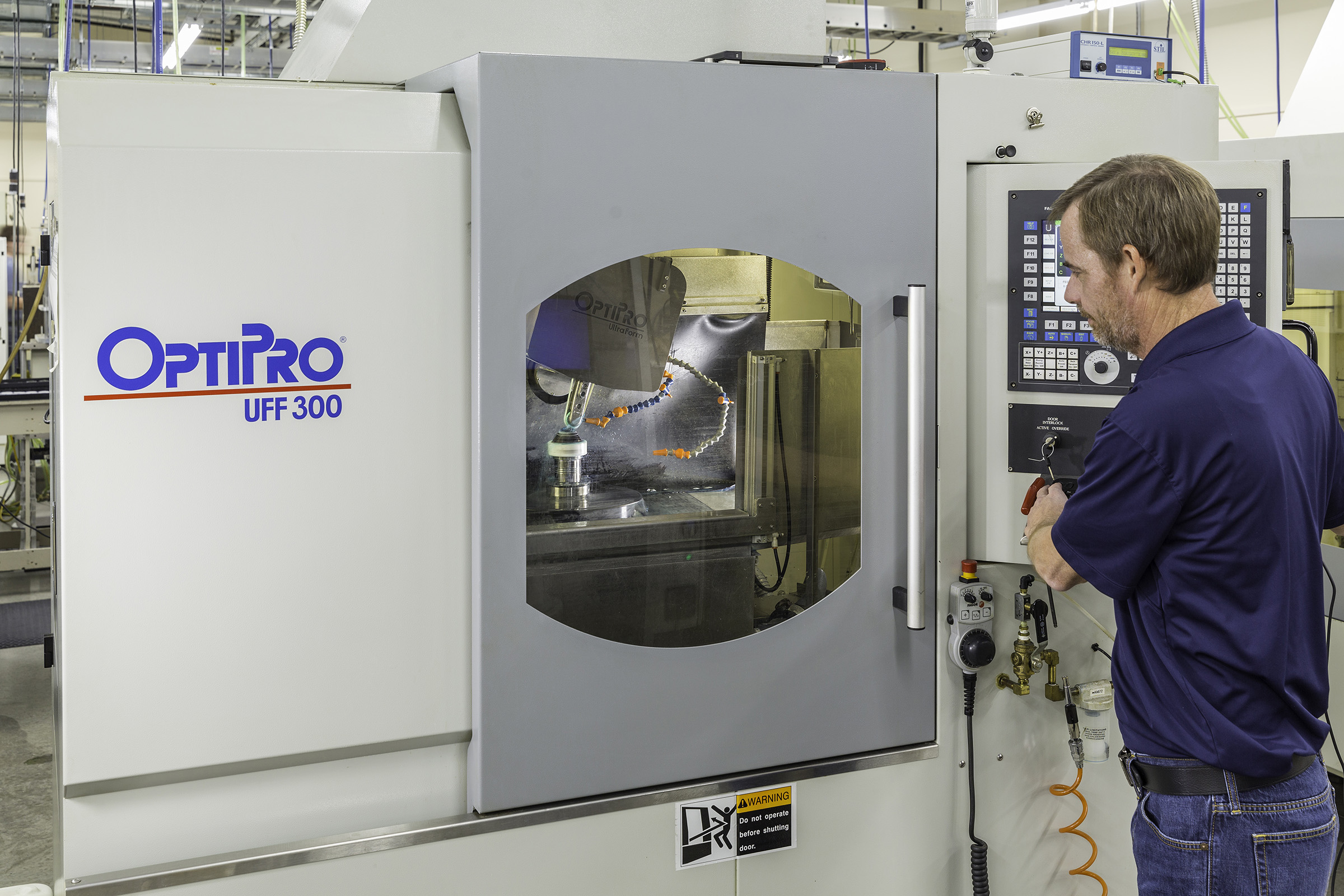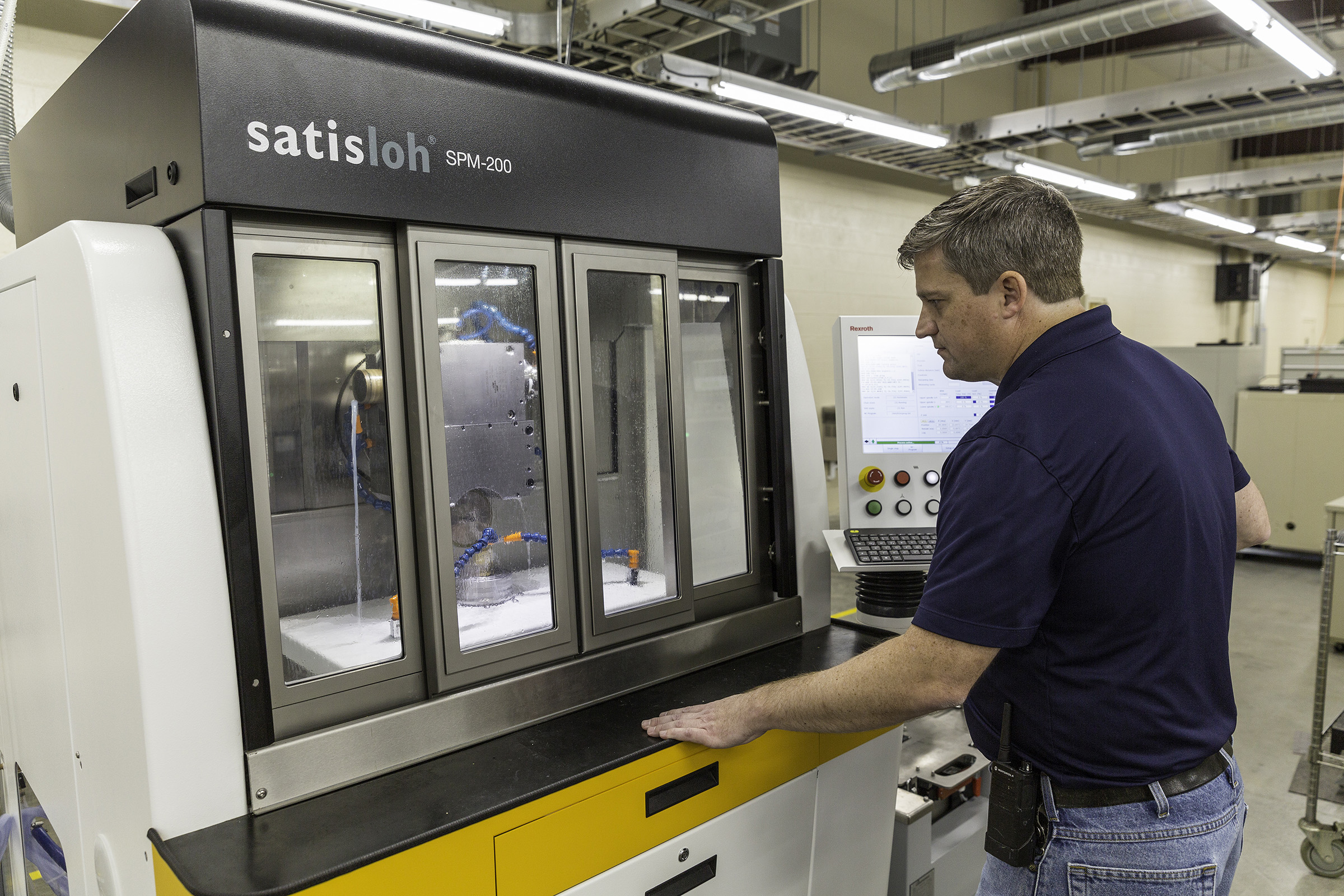Aspheric Processing
LaCroix Precision Optics has a variety of different top-of-the-line aspheric machinery that utilize unique kinematics to reduce mid-spatial frequencies and improve form error. Current machinery includes:
- Loh SPM-200 Aspheric Grinder
- Loh SPS-200 Aspheric Polisher
- OptiPro eSX 150 Aspheric Grinder
- Loh SPS-125 Aspheric Polisher
- OptiPro UFF 300 Aspheric Polisher
- PotiPro OptiTrace 5000 Profilometer
- OptiPro UltraSurf 4X 300 3D Metrology
- QED Q22-Y
- QED Q22-XE

We begin processing aspheric lenses by designing a near net-shaped optical glass blank and then grinding a best-fit sphere onto the surface. From this point, the initial aspheric profile is ground onto the lens using one of our advanced aspheric grinders.
Metrology is then used to measure the surface of the asphere and characterize all deviations from its theoretical form. This information is then used to correct and reduce form error on the aspheric surface. A fine grind is performed to minimize sub-surface grinding damage and prepare the asphere for polishing.


The aspheric lens is then greyed out, removing the subsurface damage. This begins a corrective feedback loop between metrology and the aspheric polishers.
When necessary a finishing process is performed using MRF to reduce form and slope error.
| Asphere | Commercial | Precision | Max Capability |
|---|---|---|---|
| Form error | 2.0 µm | 1.0 µm | 0.3 µm |
MRF
MRF (Magnetorheological Finishing Fluid) utilizes a magnetically-sensitive fluid to create a moving ribbon to polish optics. The fluid is manipulated using a magnetic field to adjust the viscosity and thus the removal rates. The lens is then pulled across the ribbon in either a spiral or raster path.
MRF can produce significant increases in quality. Spherically, λ/20 surfaces can be achieved. Aspheric surfaces can reach λ/4, with reduced mid-spatial frequency errors.
Types of Optics
- Spherical
- Aspheres
- Prisms
- Planos
Machines
- QED Q22-Y
- QED Q22-XE




